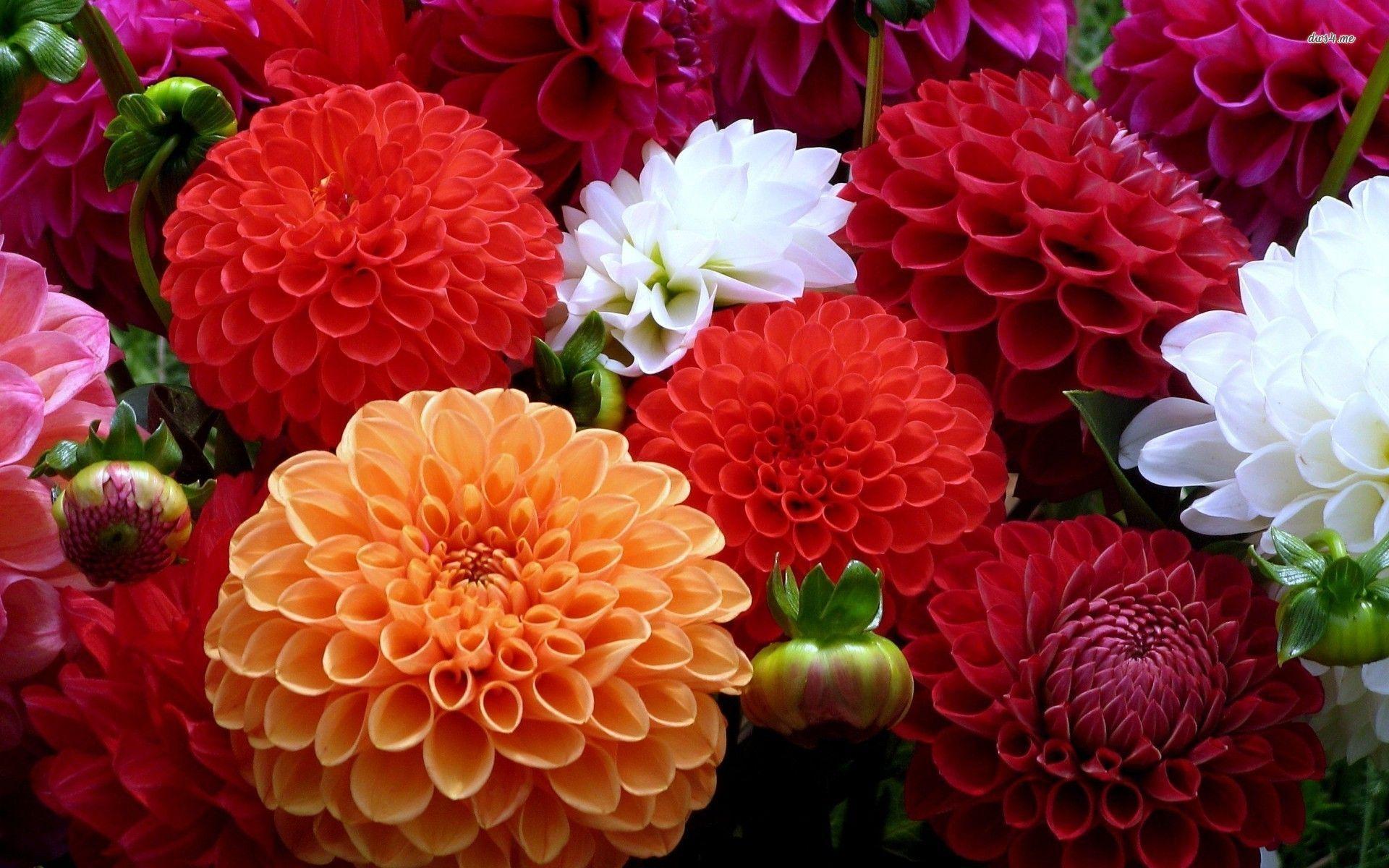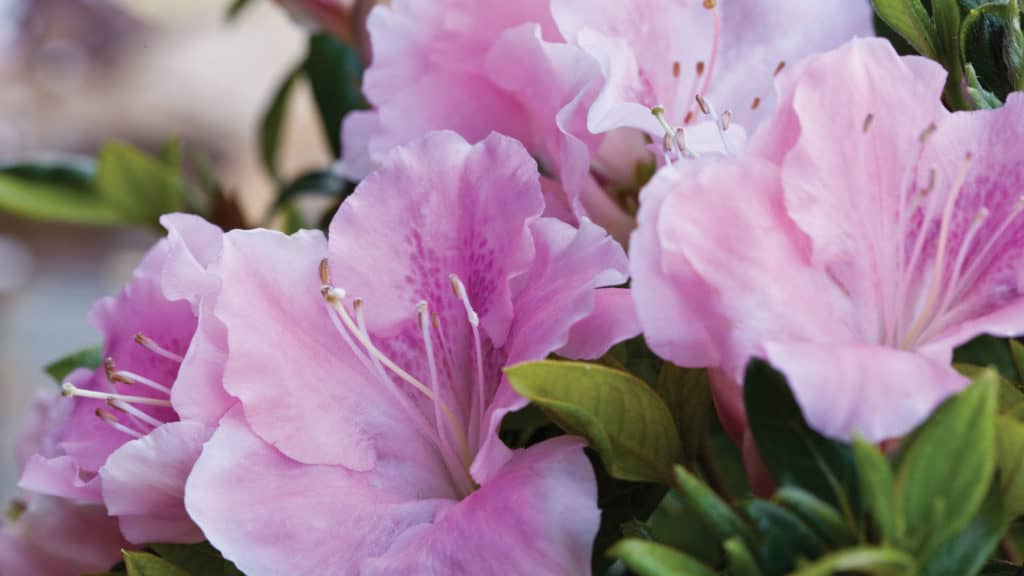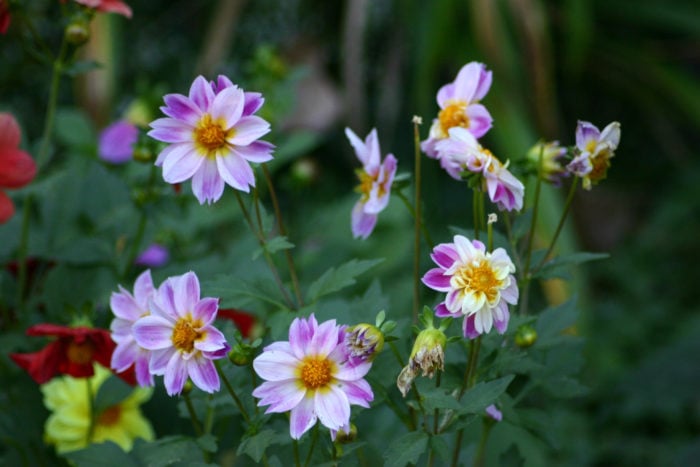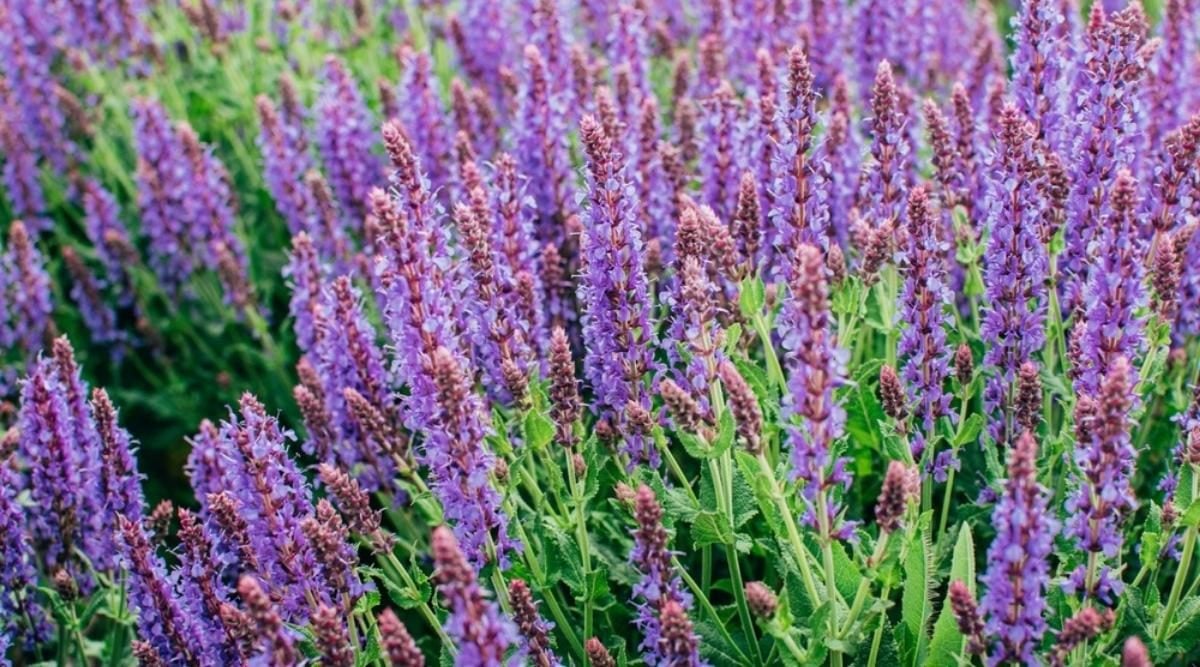Learn How to Successfully Grow Tulips in Pots and Containers
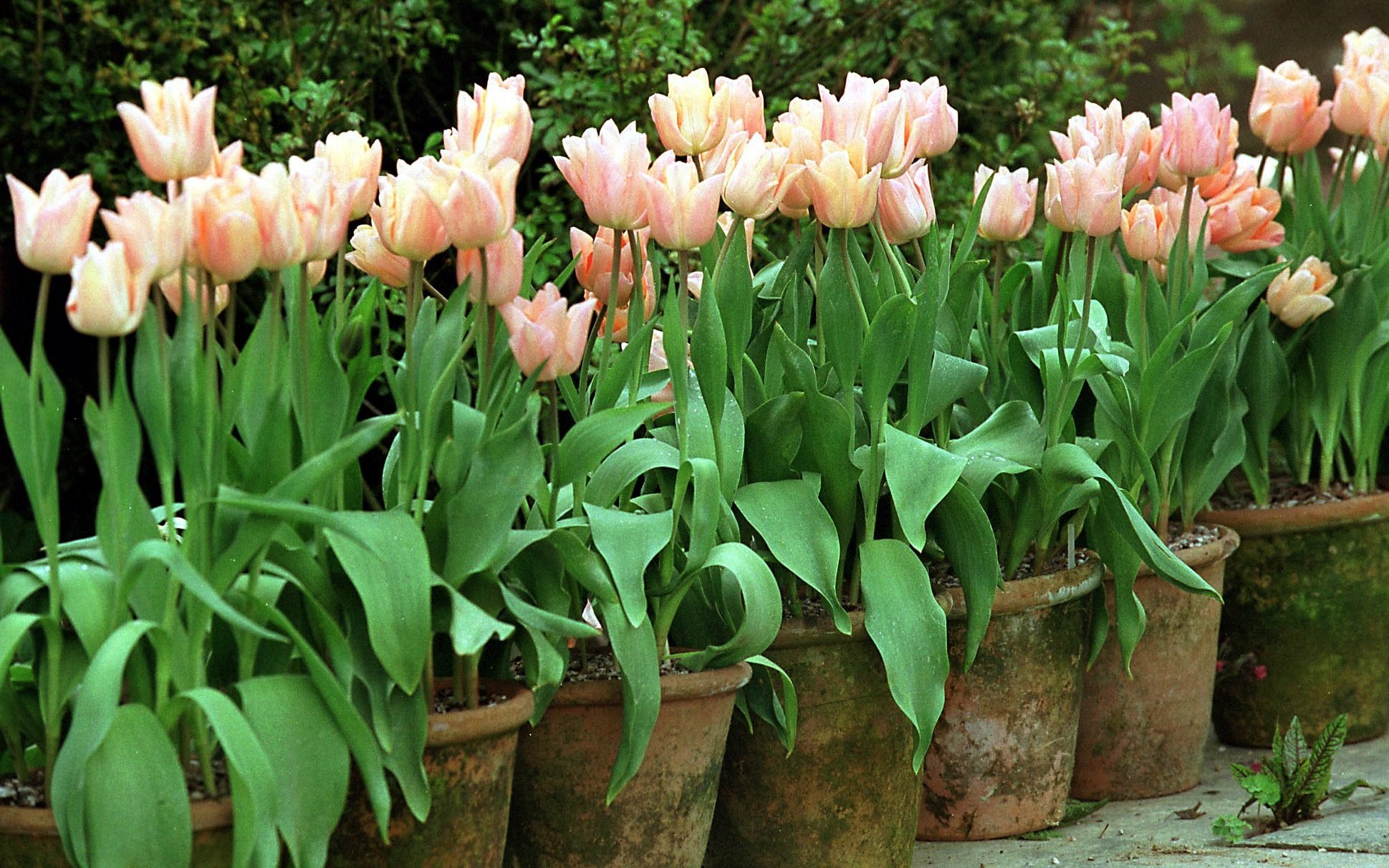
Table of Contents
Gardens bloom in the spring, and gardeners rejoice when those flowers look beautiful with little to no effort. Therefore one of the most beloved plants worldwide is the tulip, a spring bulb known for its beauty and hardiness.
But there are a few things that should be kept in mind while planting tulips in pots. Facts like when to plant the bulbs, how much water it needs, and so on. And for beginners, these points might become confusing.
In this article, we talk about the steps to take when you wish to see tulips blooming in your garden come spring.
Steps to Follow While Planting Tulips in Pots
1. The Correct Time and Place
To ensure beautiful flowers after winter, the tulip bulbs should be planted well before the frost. The perfect time for planting tulips in pots is mid to late autumn. That way, the plants can remain dormant throughout the cold and bloom in time for spring. But, even if you are late to the party, planting them as late as January would work as well.
Planting late has its benefits as well since the cold weather is bound to kill off most fungi and viruses. This makes sure that your tulips are free of tulip fire. As these plants are extremely hardy, they survive even the harshest of winters once planted. But if you are concerned, just put a layer of mulch on top of the soil to keep it warm.
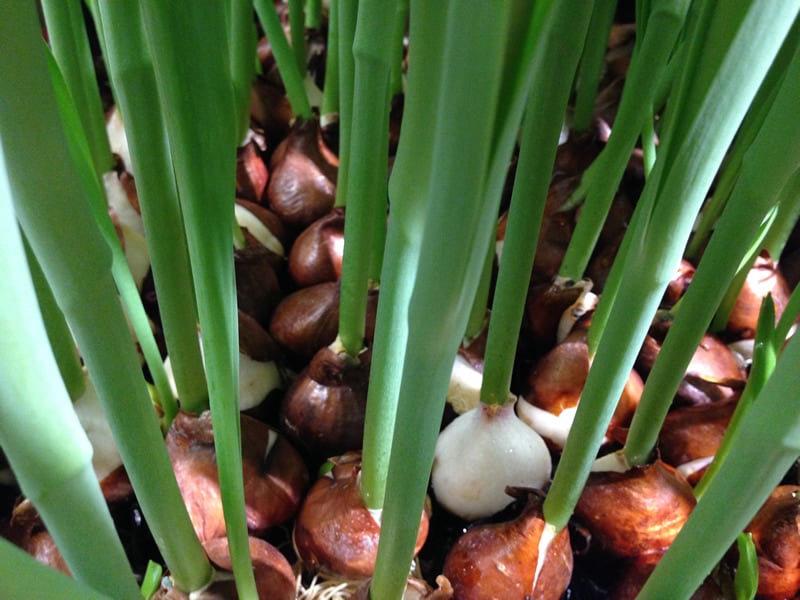
As for the location of your container, during the dormant state, it needs to be in a cool place. But if the weather is windy, placing them in a sheltered spot is advised. And once the chilling process is over, put the blooming plant in an area that receives plenty of sunlight. The direct rays will make sure your tulips thrive.
2. Choose the Right Bulbs
While getting new plants for your yearly garden, plan the display as best as you can. This will influence your choice in the matter of planting tulips in pots. Ensuring the quality of bulbs means that crops will grow to the best of their capability. So, your bulbs should not be soft or look rotten. And if they are deceased or damaged, they should be discarded immediately.
Next comes the choice of varieties in the species of tulips and what would be the best for your garden. The best option for planters is the tulips with stems that do not grow too tall. This makes the tulips stay upright even during windy days. The size of the tulips also looks much proportionate to the size of the planter. And you can plant as many bulbs as you wish in the same pot.
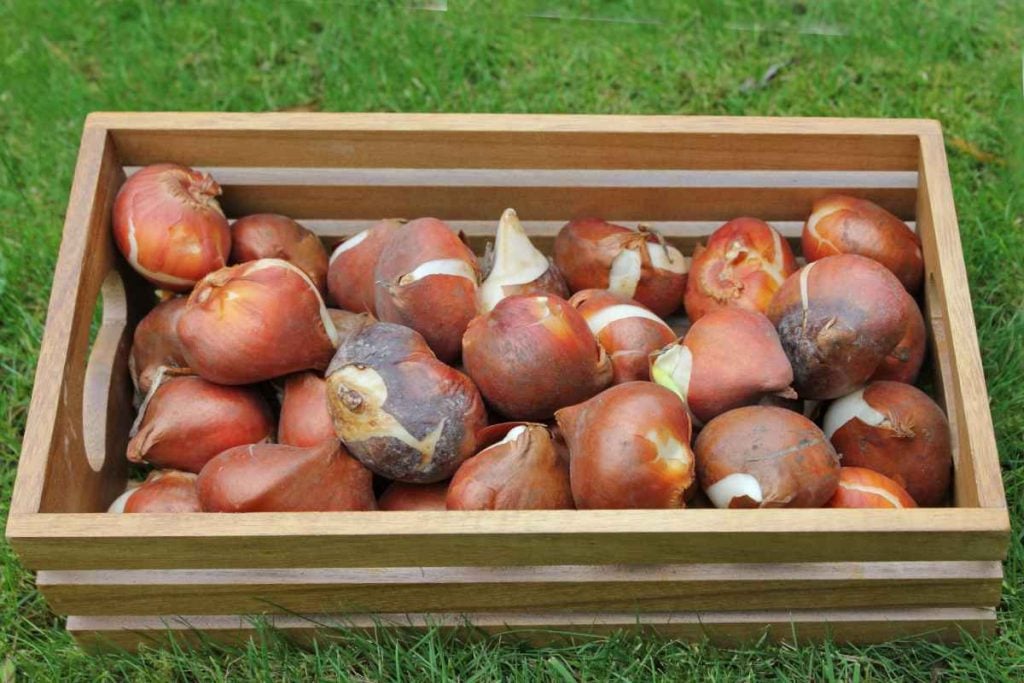
Tulips are known for their vibrant colours that make the day look even brighter. To make those stunning blossoms stand out even further, you can choose a single variety for the entire pot. A vivid pink batch of tulips would brighten up any area all by itself. So keep in mind to use a single variety while planting tulips in pots.
For those with an extensive garden full of flowers, different colour tulips prove a striking foil against the other plants. Colours like red and yellow also look good against each other in a single planter. But the trick to remember while choosing many varieties of bulbs is to choose the ones that flower at the same time.
Pro Tip: There are many varieties available that are known to thrive in pots and containers. If you are new to gardening, choose the tried and tested species like Tulipa ‘Ballerina’ or ‘Queen of Night’ for the best results. Dwarf varieties like ‘Red Riding Hood’ and ‘Lady Jane’ also thrive in shallow containers.
3. Choose the Right Container
While getting containers for your garden, it is necessary to plan, especially if you are thinking of planting tulips. The aesthetics, as well as the practicality, has to be considered, as tulips do not thrive in small spaces. Therefore, planting tulips in potsmeans getting the biggest one possible.
A big planter with a diameter of 18 inches looks perfect for the tulip’s aesthetic appeal. Since you will be planting many bulbs at once, the plant should have ample space to grow. Spring bulbs like tulips also look their best when the bloom occurs in a clump, with the flowers creating a lush uniformity.
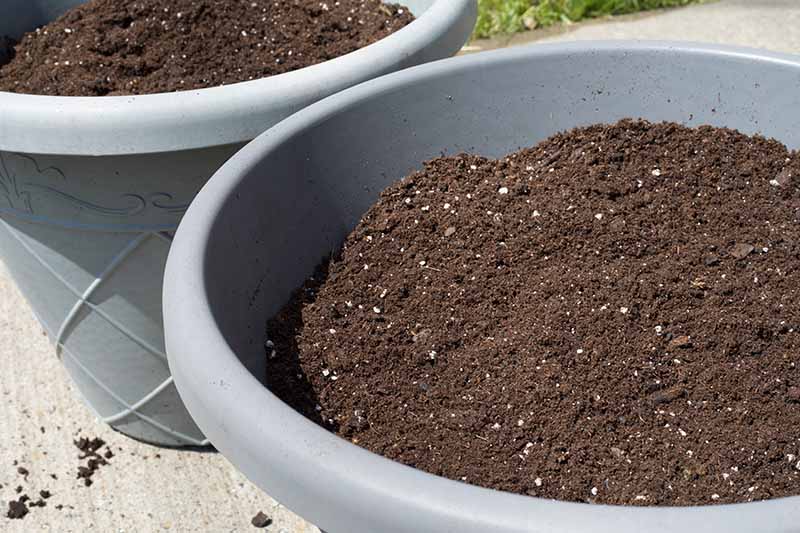
In case of depth, the pots should be at least 40 to 50cm deep. A general rule of thumb is to plant it at about three times the depth of the bulbs. But you can go even as deep as 12 inches if needed. Planting the bulbs deep means there’s a high chance that the plant will come back year after year.
The kind of garden you aspire to have also plays a big role in the choice of your container. If you have a window box that remains green throughout the year, your planter will need to be a big one. You also need to make sure it has a hole underneath to drain the soil of excess moisture.
4. Prepare the Container
Tulips are relatively easier to grow than other flowering plants. You just have to prep the container well before planting, as the planter makes all the difference. Make sure that you start with a clean and disinfected container that has holes to ensure proper drainage. To keep the soil well drained, place a layer of rocks or perlite and vermiculite potting mix at the very bottom.
For the soil used in planting tulips in pots, use some plotting mix instead of regular soil. You can find these plotting mixes at any nursery near you. This mixture allows your bulbs to accumulate all the necessary nutrients from the soil. This also keeps the soil from being too damp.
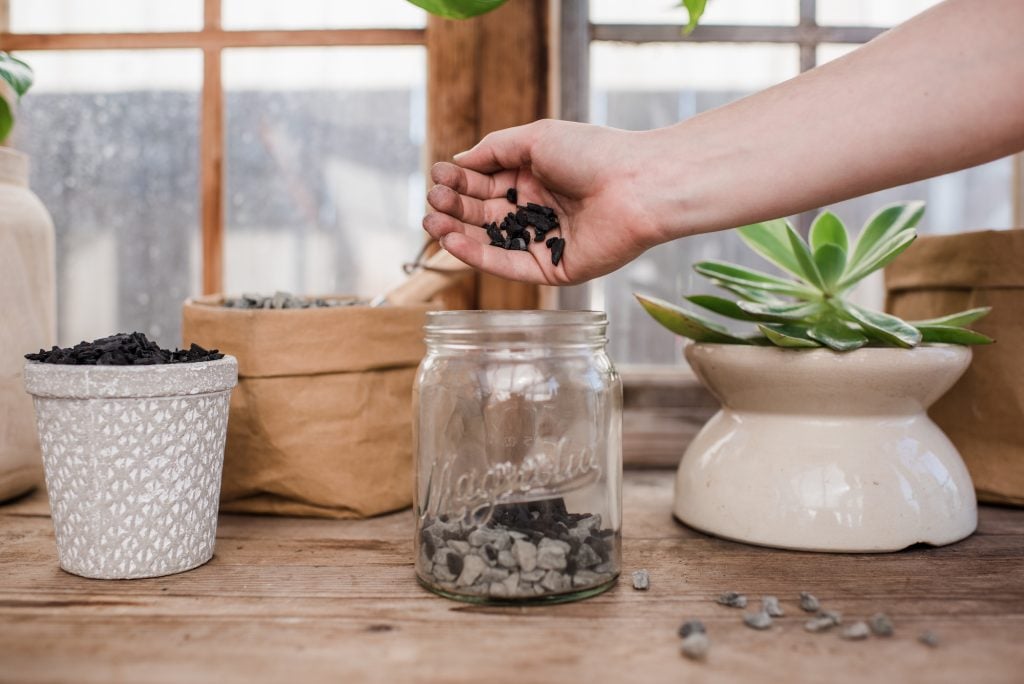
Tulips are also hardy enough not to require much in terms of fertilizers. But if you wish to give it a little boost, use any kind of homemade compost. Store-bought peat-free multipurpose compost works well too, as it does not retain expensive water.
5. Create a Beautiful Display
You can plant a good number of bulbs in a single container while planting tulips in pots. Just make sure they have enough space to grow, so space them about twice the bulb’s width. This way, when the plant starts flowering, your pot will look lush and beautiful.
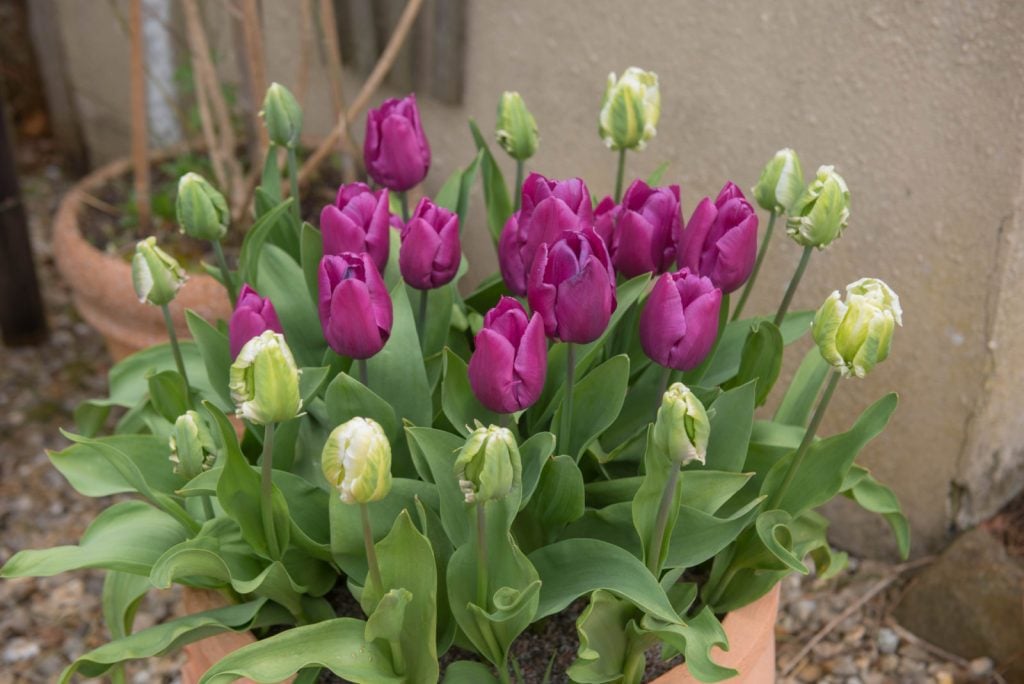
Another great way to make the most use of your container space is by layering your tulip bubs. By doing so, you will get flowers of different lengths. Simply cover the lowest layer with 1 to 2 inches of soil and plant the next layer. A couple of layers will fill up the pot entirely.
6. Pair with Other Plants
While planning for your garden, you would want to make it look as beautiful as possible. And to achieve that, get a bunch of other plants to go along with your tulips. After planting tulips in pots, add other plants to the same container to make the area look lush and full. The most common choice in that regard is other flowers like violas and forget-me-nots.
Whether be it on a window box, or a border, tulips can look striking against all sorts of plants. To make the vibrant flowers stand out, gardeners often choose perennials, as the rich greenery makes creates the perfect foil.
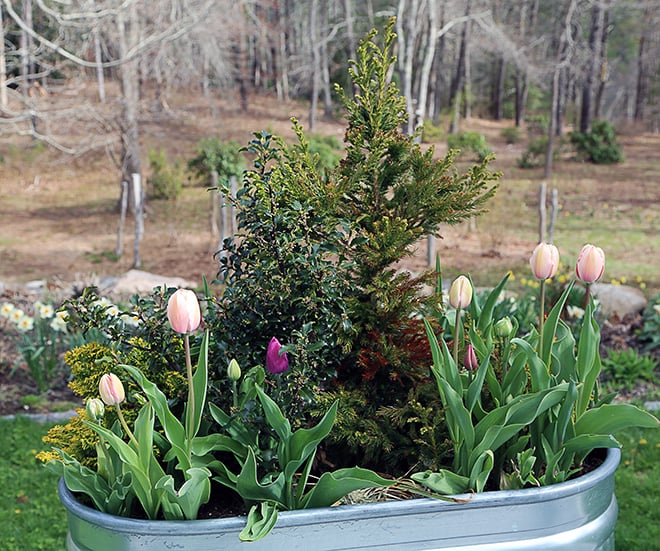
Tulips are one of the most versatile plants in the world and can look great with most plants. But once the tulips bloom fully, they flower for about three weeks before the foliage starts to die. And that is if your soil is perfect; otherwise, the flowers may not even last till then.
So make the most of the short time by making the landscape look amazing with the help of multiple aesthetic plants. Get the hardiest single flowers like the Darwin hybrids and Triumphator Lily flowering tulips and pair them with evergreen shrubs like Tom Thumb.
7. Planting the Bulbs Correctly
As the tulips are to be planted at quite a depth from the surface of the soil, most gardeners prefer to dig trenches. This is a better technique than individual holes as it helps with pest control. The deeper the bulbs, the lesser chance of them being dug out by squirrels.
While planting tulips in pots, you may also think about pairing them with other plants. To allow that, you have to plant the other seeds later. The first to go in should be the tulip bulbs to give that mixed display. The result would be something called bulb lasagne, as the different plants layer themselves in the soil.
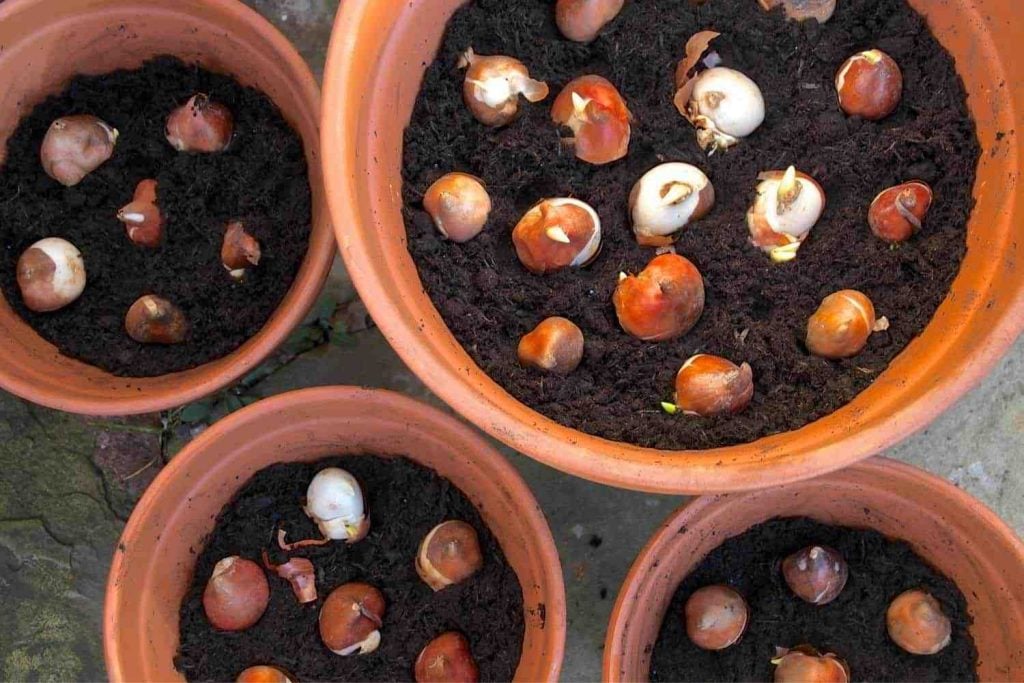
After you have planted the bulbs, watering them becomes a very important step. The soil should be watered thoroughly. The excess water is drained off the holes with enough water to survive. Outdoor pots need no watering at all, except if there is a drought.
After planting tulips in pots, the plant will now go through a period of dormancy before the flowers start to bloom. The plant thrives in the cold, so keeping the pot outside during winter at 7 to 13 °C is perfect. This stage lasts for about 12 to 16 weeks, after which the plant begins to grow.
8. Ongoing Tulip Care
Afterplanting tulips in pots, you need to make sure that they have everything they need to blossom. This includes keeping in mind the particular variety you chose and its growing conditions. For most tulips, protection during the worst of the colder months is required. They bloom beautifully in sunny and sheltered spots.
Also, try to keep your pots against the house during winter to shield them from wetness. By sheltering it, you can keep the compost from becoming too soggy, as well as protect the eaves of the tulips. The wall will also absorb sunlight during the day and provide extra warmth to the pot.
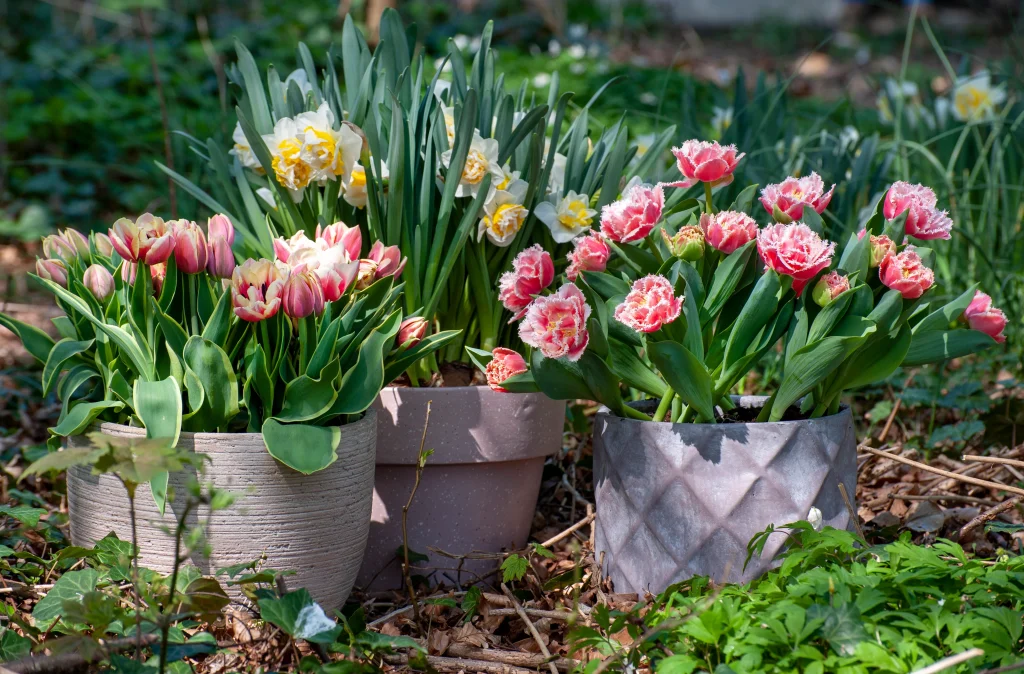
Rainfall during the winter is especially harmful to the bulbs. So, position your container in a way that the excess water can be drained away. Another factor that weighs in on tulip care is keeping your plant free of pests. Squirrels love tulips, but if they get their hands on the bulbs, you will never see your bounty crop.
To keep the plants free of pests, use a metal mesh cover afterplanting tulips in pots. You can remove the covering once the tulips start shooting up and safely display your plants.
Wrapping Up!
Tulips are a great addition to any garden. Their hardy nature, as well as their beauty, makes them ideal flowers that can be planted during the winter months. But contrary to popular belief, planting tulips in pots is not difficult at all.
Just make sure you choose the perfect variety of tulips and get to planting. Some big planters and a little bit of compost ensure proper bloom in spring.
And to know more about growing plants like tulips, subscribe to our newsletter for top gardening secrets.
Frequently Asked Questions
Can You Leave Tulips in Pots All Year?
Tulips are usually considered to be perennial, but many varieties offer their beautiful blooms reliably for just one year. Therefore, many gardeners plant new bulbs each autumn for a fresh crop. For tulips grown in containers, a fresh batch of bulbs is needed every year.
Do Tulips Multiply?
Tulips do multiply and spread, but they need a full year’s growth to do so. The process of multiplying begins after their first bloom in spring. It is then that the bulbs start sprouting from the main tulip root. This cycle gives about 2 to 5 more bulbs in turn.

![How To Get Rid Of Aphids On Plants [Tried and Tested Techniques]](https://staging.thearches.co.uk/wp-content/uploads/How-To-Easily-Get-Rid-Of-Aphids-On-Plants.jpeg)
